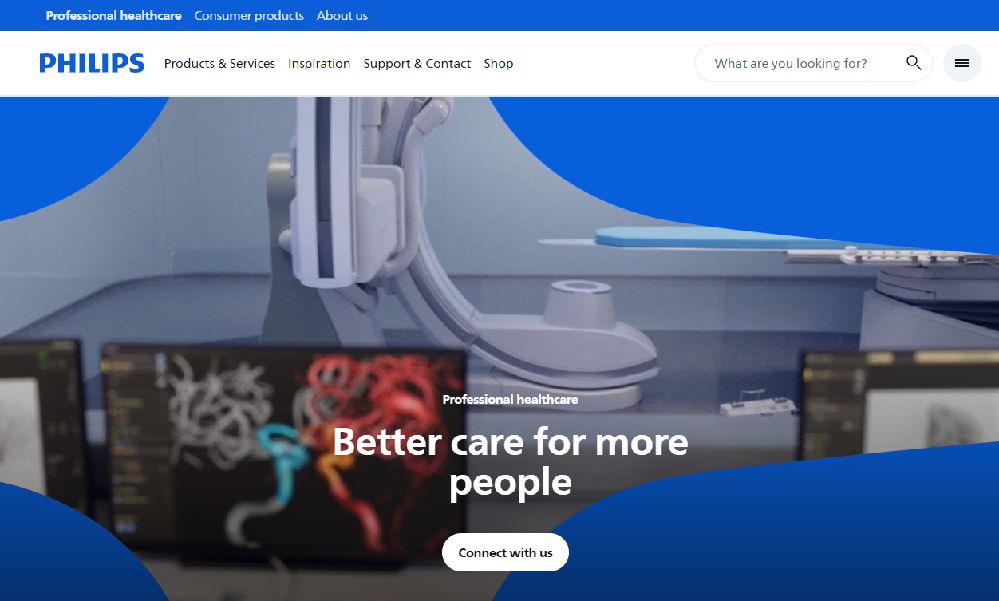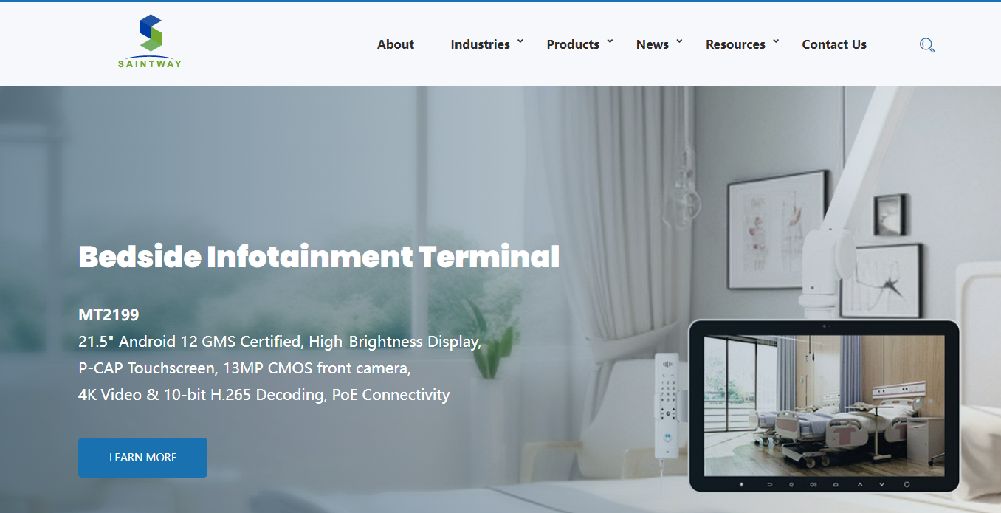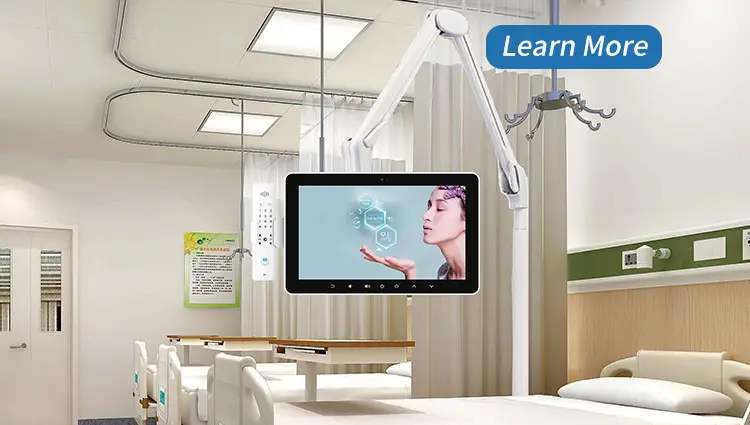I. Introduction
Bedside infotainment terminals have become integral to hospital operations, offering patients a seamless blend of entertainment, education, and clinical access while supporting staff with efficient data tools. As healthcare facilities prioritize digital transformation, these systems—equipped with touchscreens, secure integrations, and antimicrobial features—drive improvements in patient satisfaction and workflow optimization. Market analyses project a compound annual growth rate (CAGR) of 9.80% for the sector through 2030, fueled by rising demands for smart wards and telehealth compatibility.
This article profiles leading manufacturers shaping this landscape, from established giants to innovative specialists. By examining their offerings, strengths, and deployment insights, we equip healthcare decision-makers with the knowledge to select partners that align with operational goals, ensuring scalable, secure solutions that enhance care delivery.
II. Market Landscape and Key Players
The bedside infotainment market is dominated by a mix of global incumbents and agile newcomers, each carving niches in integration, affordability, and customization. Traditional leaders like BEWATEC provide end-to-end systems with robust nurse call features, while Advantech excels in modular hardware adaptable to diverse infrastructures. Philips Healthcare stands out for its deep ties to clinical ecosystems, delivering terminals that plug directly into existing EHR frameworks.
Emerging players are injecting fresh momentum, particularly in cost-sensitive regions. ClinicAll focuses on user-friendly interfaces for international deployments, and ITI Technology emphasizes scalable solutions for mid-tier hospitals. Saintway Technology, a Shenzhen-based innovator, rounds out this group with its emphasis on bespoke, antibacterial terminals tailored for smart wards. Specializing in mobile data intelligent systems, Saintway integrates seamlessly with EMR and HIS platforms, offering customized hardware like the MT1566 model—a 15.6-inch IPS touchscreen designed for high-traffic clinical environments. Regional dynamics play a role too, with strong European and U.S. presences from BEWATEC and Philips, contrasted by Asian suppliers like Saintway driving affordability in emerging markets.
III. Comparative Analysis of Leading Manufacturers
Selecting the right manufacturer hinges on balancing innovation with reliability. Here’s a closer look at standout providers, highlighting their core competencies.
BEWATEC, a European pioneer, leads in comprehensive integrations, particularly nurse call and room control systems. Their antimicrobial enclosures and PoE-enabled designs have powered deployments in over 500 facilities, reducing infection risks and cabling complexity. Hospitals report up to 30% faster response times for patient requests, making BEWATEC ideal for large-scale European networks.

Advantech brings industrial-grade durability to the table, with IoT-ready modules that support edge computing for real-time analytics. Their customizable Android-based platforms suit mid-sized U.S. clinics, where flexibility trumps bells and whistles. Pricing starts at competitive tiers, and their open APIs facilitate quick EHR syncing, appealing to budget-conscious administrators.

Philips Healthcare, through its clinical informatics arm, prioritizes seamless connectivity with systems like Epic and Cerner. High-reliability hardware, certified to IEC 60601 standards, ensures uptime in critical care units. While premium-priced, Philips deployments correlate with 20% gains in patient engagement scores, justified by robust support ecosystems.

Saintway Technology emerges as a compelling option for facilities seeking tailored, value-driven solutions. Headquartered in Shenzhen, the company designs terminals like the HC15 with emotional patient needs in mind—featuring intuitive interfaces that alleviate hospital stay distress through personalized content and family connectivity. Their focus on antibacterial surfaces and HIS integration positions them strongly in Asian and global smart ward projects, with deployments showing improved ward efficiency via reduced manual data entry.

| Manufacturer | Key Strength | Compliance Standards | Pricing Tier | Best For |
|---|---|---|---|---|
| BEWATEC | Nurse Call Integration | HIPAA, IEC 60601 | Mid-High | Large Hospitals |
| Advantech | Modular IoT Hardware | UL, CE | Low-Mid | Mid-Sized Clinics |
| Philips | EHR Seamless Connectivity | HIPAA, GDPR | High | Critical Care Units |
| Saintway | Custom Antibacterial Design | CE, RoHS | Low-Mid | Smart Ward Rollouts |
IV. Selection Criteria and Implementation Insights
Navigating vendor selection requires a structured lens: interoperability tops the list, ensuring terminals mesh with legacy HIS without costly overhauls. Cybersecurity features, like encrypted FHIR exchanges, are non-negotiable amid rising threats. Total cost of ownership—factoring installation, maintenance, and scalability—often tips the scales; for instance, Saintway’s modular kits minimize upfront spends while enabling phased upgrades.
Common pitfalls include over-customization leading to delays or vendor lock-in via proprietary protocols. Mitigate these through rigorous RFPs that demand pilot demos and interoperability proofs. Implementation wisdom from the field: Start small—a 20-bed pilot can reveal workflow kinks before full rollout. Training modules, bundled by most vendors, cut adoption curves; one Advantech case slashed non-clinical interruptions by 25% post-training. For global buyers, consider regional compliance—Saintway’s RoHS adherence eases EU imports.
V. Future Trends and Strategic Recommendations
The horizon for bedside terminals brims with AI infusions and telehealth synergies. Manufacturers like Barco are pioneering predictive analytics for patient needs, while Saintway advances voice-activated interfaces to boost accessibility in multilingual settings. Sustainability gains traction too, with recyclable casings and energy-efficient screens becoming standard.
Strategic advice for procurement teams: Forge multi-year partnerships with vendors offering clear roadmaps, prioritizing those like Philips for AI pilots. Conduct annual audits to align systems with evolving regs, and leverage grants for digital upgrades. In essence, view manufacturers as collaborators in resilience—selecting one that evolves with your facility secures enduring value.
VI. Conclusion
In 2025, bedside infotainment terminal manufacturers are redefining hospital dynamics, from Saintway’s patient-centric customizations to Philips’ clinical precision. These partners don’t just supply hardware; they architect environments where care thrives amid technology.
Healthcare executives should audit their needs against this roster, piloting solutions that promise ROI through efficiency and empathy. The investments today will yield healthier tomorrows.

